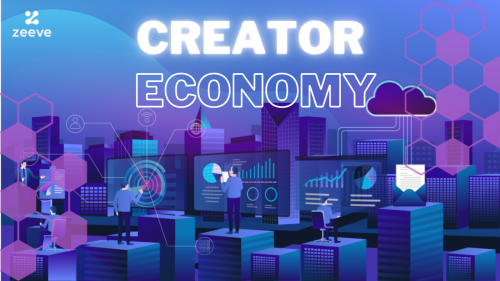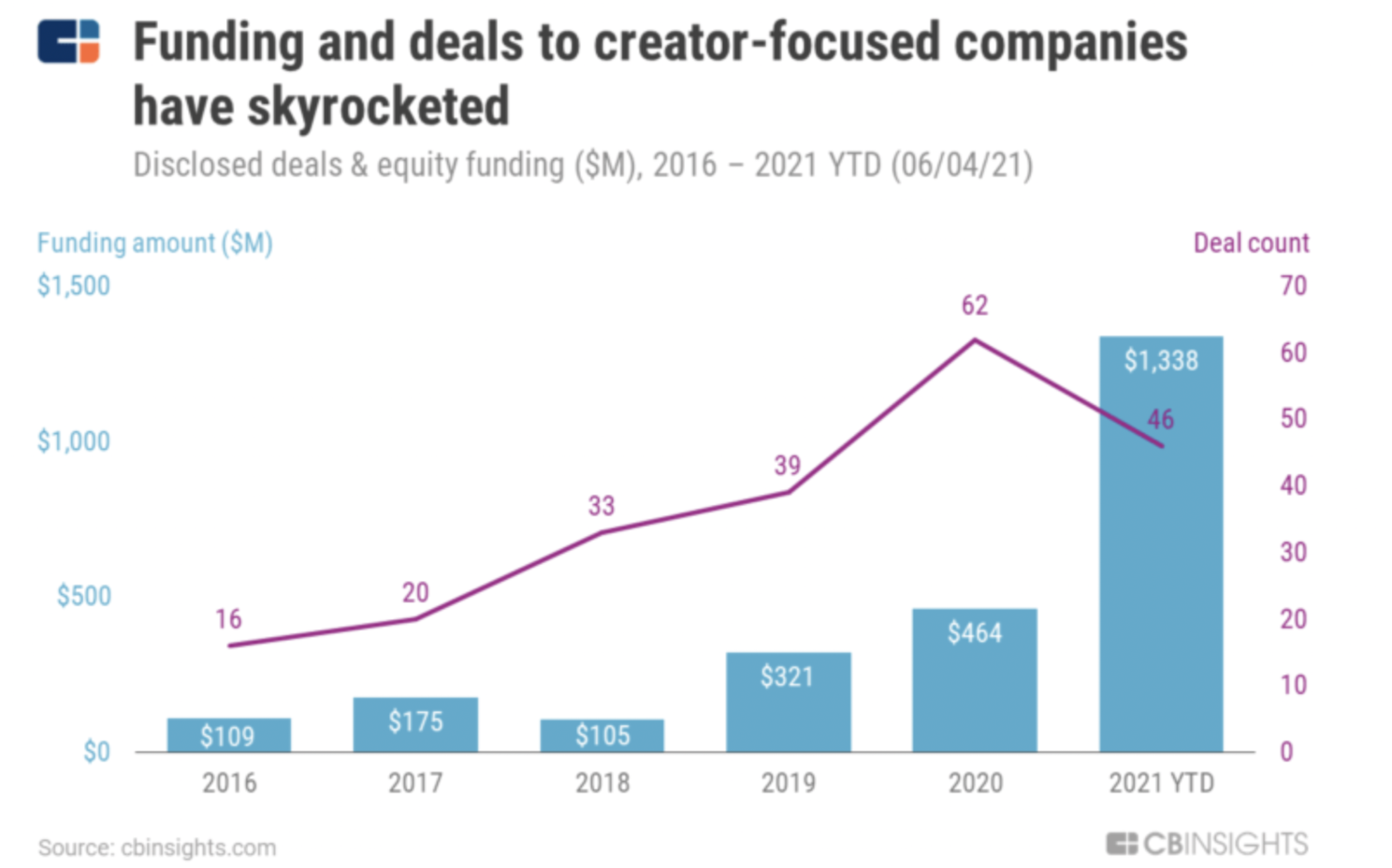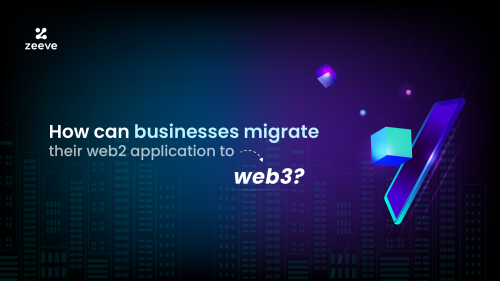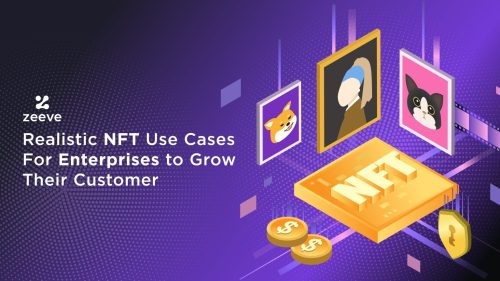
RETHINKING CREATOR ECONOMY IN THE AGE OF WEB3
The creator economy is booming. No longer do millennials want to work a typical 9-5 job. They want to be their own boss and create content for the internet. SignalFire believes, that around 50 million new people will soon consider themselves to be creators.
As Forbes reports, “Ask a kid today in the U.S. what they want to be when they grow up. No longer is musician or athlete the top answer. It’s a YouTuber—an answer 3x more popular than an astronaut.”
That’s a huge shift!
However, the creator economy too needs to undergo transformation with the rise of web3. Here in this article, we will deep dive into, why this change is probably inevitable and how it can affect you as a content creator.
Now, let’s jump straight in!
The current challenges for creators:
Web2 has been the dominant platform for creators for the last several years. But they also have their own challenges: The creators are not getting paid enough to make it worth their while.
The take rates for web2 platforms are very high. They keep a big share of the revenue. YouTube takes 45% of the total revenue, and Twitter, Facebook, and Instagram take 100% of the ad revenue.
In 2021 Spotify and YouTube paid creators $7B and $15B respectively – but the “per capita” disparity compared to web3 is striking: According to an Andreessen Horowitz tweet, web3 paid out $174,000 per creator. Meta (Previously Facebook) paid out $0.10/per user, Spotify $636 per artist, and YouTube $2.47 per channel.
It makes it hard for many creators to survive. Critics argue that these platforms are not providing enough value to content creators. Most creators don’t make enough money from their content to live off of it. Those who have amassed large followings, earn most of their revenue through sponsorships, subscriptions, and merchandise.
Here’s another big issue. In web2, creators don’t own their audience. The platform does.
And, Social platforms keep changing their Algorithms to rank videos and pages, and they don’t disclose how they do that. This significantly affects the earnings of creators and influencers.
Plus, they do not provide much scope for new creators to be discovered organically through their algorithms. Hence, paid ads remain the only reasonable way.
A substantial shift is very much needed where creators will no longer be the product, they will be the new economy. Web3 puts creators in the drivers’ seat. It allows them to retain more revenue and reduce the need for intermediaries such as publishers, platforms, or advertisers. Fantom node is a high-performing, scalable, and configurable directed acyclic graph (DAG)-based smart contract platform and is very apt for decentralized finance apps. The Fantom ecosystem of DeFi apps has already grown massively.
Here’s how web3 is altering the landscape of the creator economy:
Control Over Data, Ownership, Monetization:
Web3 is a new paradigm for the internet. Here you own your data. Not the platforms. Not the advertisers.
It has a transparent way of storing and using that data. Users can control which data they want to share with whom and to what extent with the help of DIDs (Decentralized Identities) and DWNs (Decentralized Web Nodes).
Hence, a web3 Platform will not be able to promote your content solely to keep users scrolling, unlike web2.
Smart contracts are redefining ownership in Web3 with the help of NFTs. This makes Piracy harder and less frequent. Because the hash of digital assets is stored on blockchains.
In fact, Instagram’s CEO Adam Mosseri said in December 2021 that his platform is also actively exploring NFTs and how they can make it more accessible to a wider audience. If this is done, reposting and aggregating content without permission will be hard because the content itself will have its ownership embedded within its code. It will, however, continue to be a web2 platform. Creators will still be in control of their algorithms, policies, and requirements.
Whereas web3 platforms are open. Creators have the freedom to monetize directly, without the interference of a third party. These Newly created decentralized systems will make transactions between creators and followers more efficient.
New Ways To Get Discovered and Earn Money:
The world is changing at an unprecedented pace. It’s becoming more digital, more immersive, and more real-time than ever before. The Metaverse will be the next big step towards a completely new way to live.
The technology is already here. Virtual reality, Augmented Reality, AI, Machine Learning, Blockchain, and Smart contracts will completely change the way creators create content, claim ownership, and get paid today. Metaverse will make extended reality (XR) experiences more immersive and prominent.
Big giants like NIKE, ADDIDAS, and PRADA have already started building their presence in the Virtual world. Days are not too far when people will go shopping in the Metaverse with their favorite influencers. This will take the content development game to a whole new level.
Imagine you turned on your VR headset and now can see your favorite Instagram influencer try on new clothes in an Amazon Mall. You loved one, added it to your shopping cart, and guess what? It will be delivered to your door the next day!
Digital shopping malls, hangouts, travel experiences, parties entertainment everything will be a part of this new world. The bond between creators and followers will be more real with many more incredible experiences.
It will change the way we consume data, shop, socialize, interact with brands, and even how we travel around the globe! You could go on a virtual world tour sitting beside your preferred creator instead of watching his travel videos on YouTube.
Not only this. The Metaverse will give birth to a new genre of content creators.
Designers, Architects, and Event Planners are usually not considered content creators in traditional terms. But in a virtual world, you may want to go to an Event Planner to plan your birthday, a designer for your new gown, or an architect before you design your virtual home. They will be the new class of creators.
New Revenue Streams and Opportunities:
NFTs have opened up a new door for Artists, Musicians, Athletes, and Influencers.
In 2021 itself OpenSea paid $3.9B to 22400 creators including royalties from secondary sales. This equates to an average of $174,500 per creator. Clearly, the NFT mania has a significant role behind such a big number. Even if you exclude everything, the payouts are still attractive as compared to Web2 platforms. Simply because there is no middleman and the platform charge only 2.5% in transaction fees. The rest goes entirely to the artist.
But NFTs are more than just a work of art. They can be enhanced with incentives for the holders.
It may be a YouTube collaboration, exclusive access to private groups, or a ticket to meet the creator in person.
Hence, NFTs as a monetization option is here to stay.
Many a time, a creator’s content is repurposed without compensating the creator. Smart contracts can be helpful here. Take an example of a Musician or maybe an artist. They need royalties.
In a web3 platform like OpenSea, we can actually automate the whole process. A smart contract can make sure every time that particular art is sold, the creator gets their pie. As everything is logged in the blockchain, there is absolute transparency. And, the artist will always be able to track the value of his work.
Here’s another way of generating revenue:
Shared ownership is a core feature of Web3. DAOs are built on this ideology. They change how companies are run, business is done, and their incentive structures. And when we say ‘Ownership’ in Web3, it not only means ownership of contents but actual equity as well.
Content creators can create entertainment content for a DAO and get rewarded based on their contributions. The opportunities are endless.
Web3 Benefits Both creators and users:
Social tokens allow creators or influencers to monetize their services. For example, if I have a good social following and I want to create a membership community, I could sell social tokens.
This will give my followers access to members-only content, Live Q&A sessions, etc.
A musician can create social tokens to allow fans to invest in his career. It’s almost as if the musician is monetizing himself rather than his work. As his celebrity grows, so will the value of social tokens. And, the token holders make a profit.
It’s a win-win for everyone. Fans aren’t left out since, unlike web2, they earn as well.
Where to Start with Web3?
Interact with web3 platforms. Explore. That’s the best way to start.
If you are a music lover, you must be using Spotify or YouTube music. Instead, consider Audius. It’s a fully decentralized streaming service that connects fans directly with artists.
Try out Mirror, a decentralized substitute for Medium. You get a taste of web3 right away because you have to connect your Wallet to get started instead of e-mail.
Do you spend a lot of time viewing or making videos on YouTube? Sign up for an Odysee account. You may monetize the platform without depending on AdSense; you can get paid to view content, follow channels, publish material, and invite others to use it.
If you are someone who has to do frequent video calls on Zoom or G-meet, use Huddle and see how decentralized Video calling works.
Looking for freelancing opportunities? Try your luck at Braintrust instead of Upwork.
The list can go on and on…And you know what?
We are just at the beginning of what’s possible:
We’re still in the early stages of Web3. But we are starting to see some interesting developments:
As per the data published by CB Insights, the creator economy has seen a record $1.3B in funding in 2021 alone. Prominent investors like Andreessen Horowitz, Greylock, Northzone, and Lightspeed have invested billions of dollars in this space in the last 2 years.

There is still much to be done…
Web3 platforms are not well-understood by creators. There is a need for education on monetization and the advantages of content creation in Web3.
With web3, we can imagine a future that gives creators more control over their content and data, new ways to get discovered and earn money, as well as additional revenue streams from their creations. These changes will have a significant impact on the economics of creative industries – one that is likely to be positive for both creators and audiences alike.








Responses